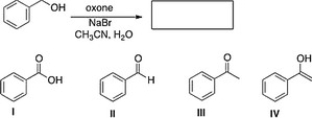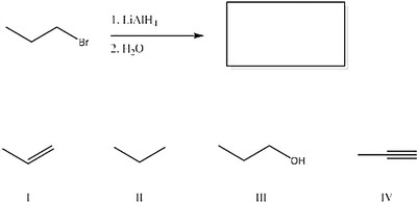Deck 10: Oxidation and Reduction
Question
Question
Question
Question
Question
Question

Unlock Deck
Sign up to unlock the cards in this deck!
Unlock Deck
Unlock Deck
1/6
Play
Full screen (f)
Deck 10: Oxidation and Reduction
1
Which of the following statements about the reduction of epoxides with LiA1H4 is true?
A) The nucleophile is a hydride (H-).
B) The reaction follows SN1 mechanism.
C) In unsymmetrical epoxides, nucleophilic attack of H- occurs at the more substituted carbon atom.
D) The nucleophile, H-, is a weak nucleophile.
A) The nucleophile is a hydride (H-).
B) The reaction follows SN1 mechanism.
C) In unsymmetrical epoxides, nucleophilic attack of H- occurs at the more substituted carbon atom.
D) The nucleophile, H-, is a weak nucleophile.
The nucleophile is a hydride (H-).
2
Which of the following explains why heats of hydrogenation cannot be used to determine the relative stability of compounds A and B below? 
A) CompoundA hasE configuration while compoundB has noE/Z configuration.
B) CompoundA is trisubstituted while compoundB is monosubstituted.
C) Hydrogenation ofA andB give different alkanes.
D) Both compoundsA andB have noE/Z configurations.

A) CompoundA hasE configuration while compoundB has noE/Z configuration.
B) CompoundA is trisubstituted while compoundB is monosubstituted.
C) Hydrogenation ofA andB give different alkanes.
D) Both compoundsA andB have noE/Z configurations.
Hydrogenation ofA andB give different alkanes.
3
What is the product of the following reaction? 
A) II
B) I
C) III
D) IV

A) II
B) I
C) III
D) IV
II
4
What is (are) the product(s) of the following reaction? 
A) I
B) IV
C) III
D) II

A) I
B) IV
C) III
D) II

Unlock Deck
Unlock for access to all 6 flashcards in this deck.
Unlock Deck
k this deck
5
Which of the following statements about oxidation and reduction isnot true?
A) Reduction results in an increase in the number of C-Z bonds.
B) Oxidation results in a decrease in the number of C-H bonds.
C) The conversion of an alkene to an alkane is reduction.
D) The conversion of an alkyne to an alkene is reduction.
A) Reduction results in an increase in the number of C-Z bonds.
B) Oxidation results in a decrease in the number of C-H bonds.
C) The conversion of an alkene to an alkane is reduction.
D) The conversion of an alkyne to an alkene is reduction.

Unlock Deck
Unlock for access to all 6 flashcards in this deck.
Unlock Deck
k this deck
6
What is the major product of the following reaction? 
A) III
B) IV
C) II
D) I

A) III
B) IV
C) II
D) I

Unlock Deck
Unlock for access to all 6 flashcards in this deck.
Unlock Deck
k this deck



